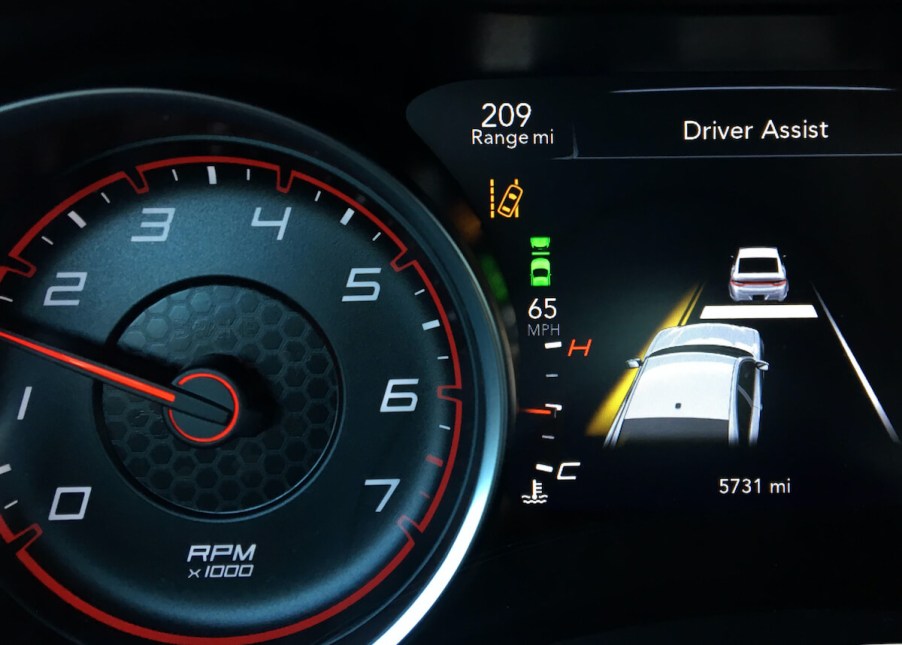
11 Car Safety Features and Systems Designed to Prevent Collisions and Save Lives
If you have a newer car, it likely has a number of safety and driver-assist features that you’re not aware of. Did you know that those driver assistance technologies are not just for protecting your car, you, and your passengers but the lives of others outside the car as well? They are, and here is a brief explanation of the main safety features that your car, or a new car you’ve been eyeing, may have.
Forward collision warning can you alert the driver of the dangers that lie ahead

Have you ever been in bumper-to-bumper traffic and looked away from the road for a second, only to realize that you’re about to roll into the car in front of you? If so, then a forward collision warning could be helpful. This warning system alerts the driver audibly and visually with a light on the dashboard. Nearly every new car in the market today is equipped with a forward collision warning.
Lane departure warning aims to keep you between the lines
Let’s face it, you might not always have a rock-steady hand on the wheel, which can cause your car to drift into the other lane. If this happens, the lane departure warning will audibly warn you. Most, if not all, new cars today are equipped with this feature.
Rear cross-traffic alert saves your car when in reverse

The rear cross-traffic alert is an audible system that alerts the driver when backing out of a parking space. The sensors on the rear bumper can detect oncoming cars, bikes, and pedestrians and alert the driver to stop. In some new cars, this feature comes with an automatic emergency braking system that also stops the car in an impending crash.
Blind spot warning detect the spaces that you can’t see

Most new cars on the road today have a blind spot warning system that alerts the driver if a car is in the adjacent lane (on either side) in their blind spot.
Automatic emergency braking can save your car in either direction
The automatic emergency braking system automatically applies the car’s brakes to mitigate an impending crash with another vehicle. This system can work when the car is moving forward or backward. Here is a breakdown of the different emergency braking systems, according to the NHTSA:
- Pedestrian automatic emergency braking: A pedestrian automatic emergency braking system can detect when a person is walking in the vehicle’s path. If the driver doesn’t react, the system will provide the braking.
- Rear automatic braking: The rear automatic braking system uses the rear parking sensors and backup camera to detect a potential collision while the car is in reverse.
Driver-assistance features keep the car at a safe distance and between the lines
If you have grown accustomed to using cruise control when driving on the highway, you’ll love the driver-assistance features that most new cars have today. Here is a breakdown of the three most common ones:
- Adaptive cruise control: Adaptive cruise control adjusts your vehicle’s speed to keep a safe distance between it and the vehicle in front of it.
- Lane-centering assistance: Lane-centering assistance uses a camera that monitors the vehicle’s position within the lane and applies steering inputs when needed to keep it centered.
- Lane-keeping assistance: Lane-keeping assistance prevents the car from drifting out of its lane. The system uses lane-departure sensors to detect the lines in the road, and it applies steering inputs, brakes, or even accelerates one of the wheels to keep the car inside the lane.
Passive safety systems

In addition to all of the sensors and fancy systems that keep your car from crashing, there are a few safety features that help you see where you are going. Here is a breakdown:
- Backup camera: Backup or rearview cameras are standard equipment in every new car. This small camera is located on the rear bumper or trunk lid of the vehicle, and it helps the driver see when the car is in reverse. It should be noted that the driver should still look around while backing up, as a backup camera is not a substitute.
- Automatic high beams: Automatic high beams automatically switch between the car’s high and low-beam settings. A sensor detects the lighting conditions and whether an oncoming vehicle is approaching and turns the car’s high beams on or off accordingly.
- Automatic crash notification: Many new cars come with an automatic crash notification system, which notifies first responders in the event of an accident. The system can connect to an operator, who will then communicate with the driver. The automatic crash notification system can decrease the time it takes emergency responders to get to the scene of the accident.
Car safety systems are designed to prevent collision and keep you safe
Whether you own a newer car or plan to buy one, it’s probably equipped with the aforementioned safety features. Some of them are active, while others are passive, but regardless, they are meant to keep you, your passengers, and your vehicle safe in the event of an accident.



